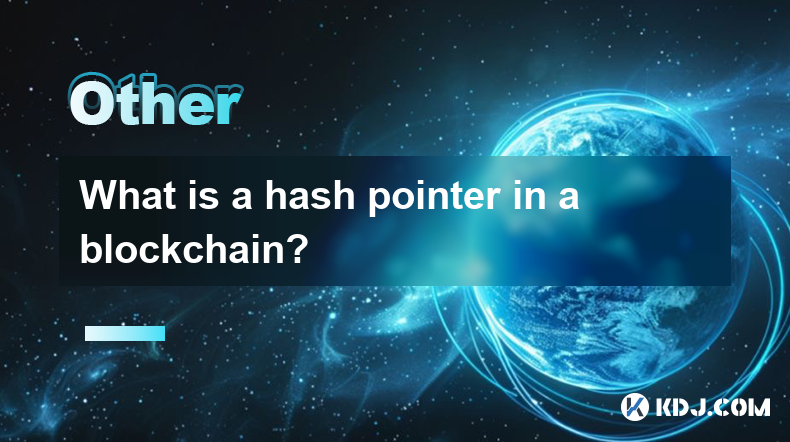-
 Bitcoin
Bitcoin $118100
-0.44% -
 Ethereum
Ethereum $3585
5.43% -
 XRP
XRP $3.434
5.65% -
 Tether USDt
Tether USDt $1.000
0.02% -
 BNB
BNB $743.8
3.89% -
 Solana
Solana $178.7
3.84% -
 USDC
USDC $1.000
0.03% -
 Dogecoin
Dogecoin $0.2381
12.81% -
 TRON
TRON $0.3270
3.62% -
 Cardano
Cardano $0.8315
4.93% -
 Hyperliquid
Hyperliquid $44.51
-4.42% -
 Stellar
Stellar $0.4710
1.52% -
 Sui
Sui $3.896
-2.51% -
 Chainlink
Chainlink $18.09
6.98% -
 Hedera
Hedera $0.2681
9.31% -
 Bitcoin Cash
Bitcoin Cash $516.7
4.83% -
 Avalanche
Avalanche $23.95
6.96% -
 Shiba Inu
Shiba Inu $0.00001490
5.67% -
 UNUS SED LEO
UNUS SED LEO $8.966
0.80% -
 Toncoin
Toncoin $3.294
4.39% -
 Litecoin
Litecoin $105.4
4.69% -
 Polkadot
Polkadot $4.356
5.30% -
 Uniswap
Uniswap $10.29
17.25% -
 Monero
Monero $327.9
-3.04% -
 Bitget Token
Bitget Token $4.942
4.33% -
 Ethena USDe
Ethena USDe $1.001
0.08% -
 Pepe
Pepe $0.00001348
2.17% -
 Dai
Dai $1.000
0.02% -
 Aave
Aave $320.8
0.58% -
 Bittensor
Bittensor $411.8
-4.07%
What is a hash pointer in a blockchain?
Hash pointers in blockchains ensure data integrity by linking each block to the previous one with a cryptographic hash, making tampering detectable.
Apr 15, 2025 at 09:42 am

A hash pointer in a blockchain is a fundamental concept that plays a crucial role in maintaining the integrity and security of the entire system. A hash pointer is a data structure that not only points to the location of some data, but also includes a cryptographic hash of that data. This dual functionality is what makes hash pointers so important in the context of blockchains, as they enable the verification of data integrity and help maintain the immutability of the ledger.
The Structure of a Hash Pointer
In traditional data structures, a pointer simply references the memory address of a piece of data. However, a hash pointer goes beyond this by including the hash of the data it points to. The hash is generated using a cryptographic hash function, which produces a fixed-size string of bytes that is unique to the input data. This hash is then stored alongside the pointer, creating a hash pointer. This structure allows anyone to verify the integrity of the data by recalculating the hash and comparing it with the stored hash.
The Role of Hash Pointers in Blockchains
In a blockchain, each block contains a hash pointer to the previous block. This creates a chain of blocks where each block is cryptographically linked to the one before it. This linkage is what gives the blockchain its name and is essential for maintaining the integrity of the entire ledger. If any data in a block is altered, the hash of that block changes, which in turn affects all subsequent blocks in the chain. This makes it extremely difficult to tamper with the data without being detected.
How Hash Pointers Ensure Immutability
The immutability of a blockchain is largely due to the use of hash pointers. Once a block is added to the chain, altering any data within it would require recalculating the hash of that block and all subsequent blocks. Given the decentralized nature of blockchains, where multiple nodes maintain copies of the ledger, achieving consensus on such a change would be nearly impossible. This ensures that once data is recorded on the blockchain, it remains unchanged and verifiable.
Implementing Hash Pointers in a Blockchain
To understand how hash pointers are implemented in a blockchain, let's consider a simple example of adding a new block to a blockchain:
- Create the new block: The new block contains the transaction data and other metadata.
- Calculate the hash of the previous block: The hash of the previous block is retrieved.
- Generate the hash pointer: The hash of the new block's data is calculated, and a hash pointer is created that includes this hash and points to the previous block.
- Add the new block to the chain: The new block, with its hash pointer, is added to the blockchain, linking it to the previous block.
This process ensures that each block is securely linked to the previous one, maintaining the integrity of the entire chain.
Verifying Data Integrity with Hash Pointers
Verifying the integrity of data in a blockchain involves traversing the chain and checking the hash pointers. Here's how it works:
- Start from the most recent block: Begin at the end of the blockchain.
- Check the hash pointer: For each block, calculate the hash of the block's data and compare it with the hash stored in the hash pointer.
- Move to the previous block: If the hashes match, move to the previous block and repeat the process.
- Continue until the genesis block: This process continues until the first block (genesis block) is reached, ensuring that the entire chain is intact and unaltered.
This method of verification is what allows users to trust the data stored on a blockchain, as any alteration would be immediately detectable.
The Importance of Cryptographic Hash Functions
Cryptographic hash functions are essential for the effectiveness of hash pointers. These functions must have certain properties to be useful in a blockchain context:
- Deterministic: The same input always produces the same output.
- Quick to compute: The hash can be calculated efficiently.
- Pre-image resistance: It should be computationally infeasible to generate a message that has a given hash.
- Small changes in input lead to large changes in output: Even a tiny change in the input data results in a significantly different hash.
These properties ensure that the hash pointers in a blockchain are reliable and secure, making it extremely difficult to tamper with the data without being detected.
Practical Applications of Hash Pointers
Hash pointers are not only used in blockchains but also in other data structures that require data integrity and immutability. In the context of cryptocurrencies, hash pointers are crucial for maintaining the integrity of transaction records. For example, in Bitcoin, each block contains a hash pointer to the previous block, ensuring that the entire transaction history is verifiable and tamper-proof.
Hash Pointers and Blockchain Security
The security of a blockchain is heavily reliant on the use of hash pointers. By ensuring that each block is cryptographically linked to the previous one, hash pointers create a robust defense against data tampering. This security mechanism is what allows cryptocurrencies to operate without a central authority, as the integrity of the ledger is maintained by the network of nodes.
Frequently Asked Questions
Q: Can hash pointers be used in other data structures besides blockchains?
A: Yes, hash pointers can be used in any data structure where data integrity and immutability are important. They are commonly used in Merkle trees, which are used in various cryptographic protocols and distributed systems.
Q: What happens if a hash pointer is corrupted?
A: If a hash pointer is corrupted, it would be detected during the verification process. The hash of the block would not match the stored hash in the hash pointer, indicating that the data has been altered. This would break the chain of trust, and the blockchain would be considered invalid until the issue is resolved.
Q: How do hash pointers contribute to the scalability of blockchains?
A: Hash pointers contribute to the scalability of blockchains by allowing for efficient verification of data integrity. By using hash pointers, nodes can quickly verify the integrity of the entire blockchain without needing to store or process all the data, which helps in scaling the network.
Q: Are there any alternatives to hash pointers for ensuring data integrity in blockchains?
A: While hash pointers are the most commonly used method for ensuring data integrity in blockchains, other cryptographic techniques such as digital signatures and zero-knowledge proofs can also be used to achieve similar goals. However, hash pointers remain the standard due to their simplicity and effectiveness.
Disclaimer:info@kdj.com
The information provided is not trading advice. kdj.com does not assume any responsibility for any investments made based on the information provided in this article. Cryptocurrencies are highly volatile and it is highly recommended that you invest with caution after thorough research!
If you believe that the content used on this website infringes your copyright, please contact us immediately (info@kdj.com) and we will delete it promptly.
- Freedom Gold Pack: The Legacy Coin Defining 2025
- 2025-07-19 06:30:13
- Trump, the GENIUS Act, and Stablecoin Regulations: A New Era for Crypto?
- 2025-07-19 06:50:12
- Pi Network's Ecosystem Challenge: App Studio Sparks Innovation
- 2025-07-19 06:55:13
- Zebec Network's Bullish Engulfing Pattern: Price Forms and Future Outlook
- 2025-07-19 06:30:13
- XRP, Ripple, Bitcoin, Ethereum: Decoding the Crypto Landscape
- 2025-07-19 05:50:13
- Penny Altcoins Eyeing $1 in Q3 2025: Cardano, BlockchainFX, and the Hunt for Crypto Gold
- 2025-07-19 05:10:13
Related knowledge

Can blockchain be used for identity verification?
Jul 18,2025 at 02:14pm
Understanding Identity Verification in the Digital AgeIn the modern digital landscape, identity verification has become a critical component for ensur...

How to explain blockchain to someone with no tech background?
Jul 18,2025 at 11:08pm
Understanding the Basics of BlockchainTo explain blockchain to someone with no tech background, it's essential to start with simple analogies and avoi...

What are the highest paying blockchain jobs?
Jul 19,2025 at 04:49am
Overview of Blockchain Job OpportunitiesThe blockchain industry has evolved from a niche technology to a mainstream field offering a wide array of job...

Why use blockchain instead of a database?
Jul 18,2025 at 07:00pm
Decentralization and Trustless SystemsOne of the core reasons for choosing blockchain over a traditional database lies in the concept of decentralizat...

What is a smart contract on the blockchain?
Jul 18,2025 at 06:42pm
Understanding the Concept of a Smart ContractA smart contract is a self-executing contract with the terms of the agreement directly written into code....

What are the disadvantages of blockchain?
Jul 18,2025 at 10:08pm
High Energy Consumption and Environmental ImpactOne of the most frequently discussed disadvantages of blockchain technology is its high energy consump...

Can blockchain be used for identity verification?
Jul 18,2025 at 02:14pm
Understanding Identity Verification in the Digital AgeIn the modern digital landscape, identity verification has become a critical component for ensur...

How to explain blockchain to someone with no tech background?
Jul 18,2025 at 11:08pm
Understanding the Basics of BlockchainTo explain blockchain to someone with no tech background, it's essential to start with simple analogies and avoi...

What are the highest paying blockchain jobs?
Jul 19,2025 at 04:49am
Overview of Blockchain Job OpportunitiesThe blockchain industry has evolved from a niche technology to a mainstream field offering a wide array of job...

Why use blockchain instead of a database?
Jul 18,2025 at 07:00pm
Decentralization and Trustless SystemsOne of the core reasons for choosing blockchain over a traditional database lies in the concept of decentralizat...

What is a smart contract on the blockchain?
Jul 18,2025 at 06:42pm
Understanding the Concept of a Smart ContractA smart contract is a self-executing contract with the terms of the agreement directly written into code....

What are the disadvantages of blockchain?
Jul 18,2025 at 10:08pm
High Energy Consumption and Environmental ImpactOne of the most frequently discussed disadvantages of blockchain technology is its high energy consump...
See all articles

























































































